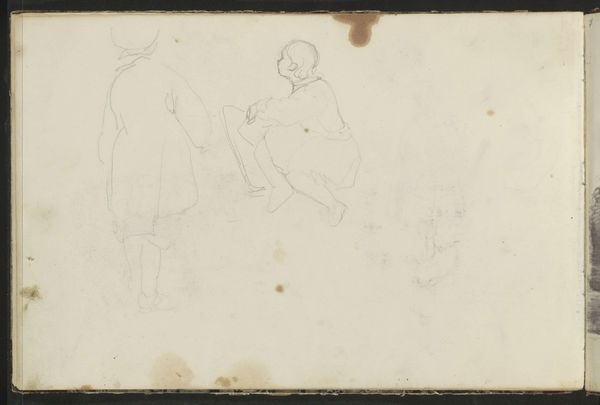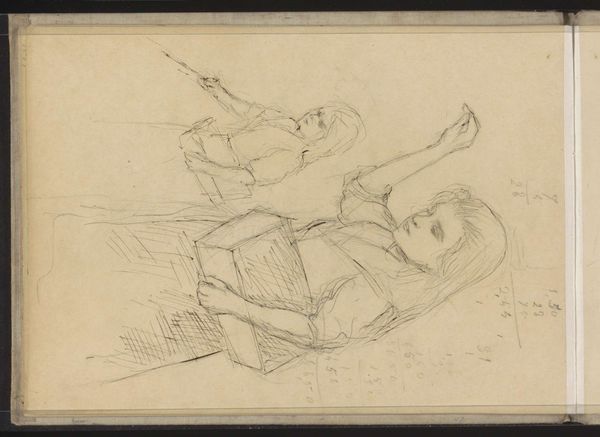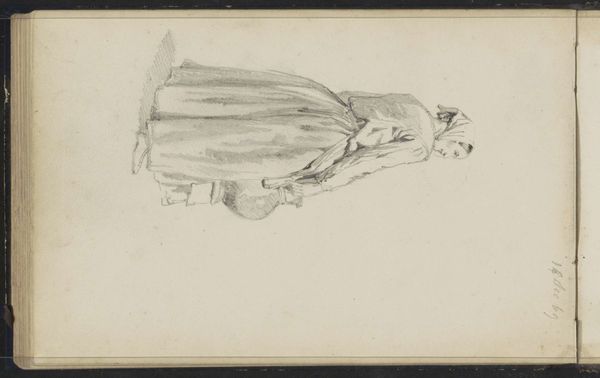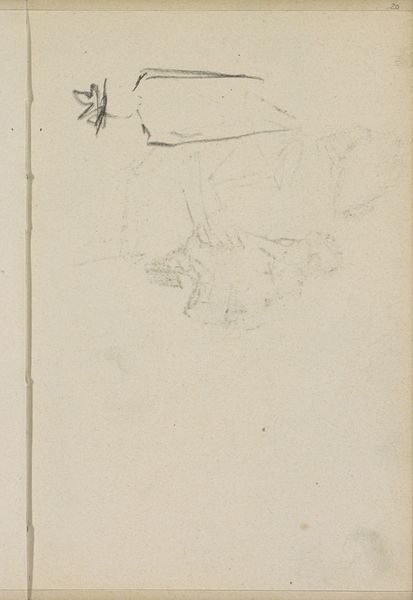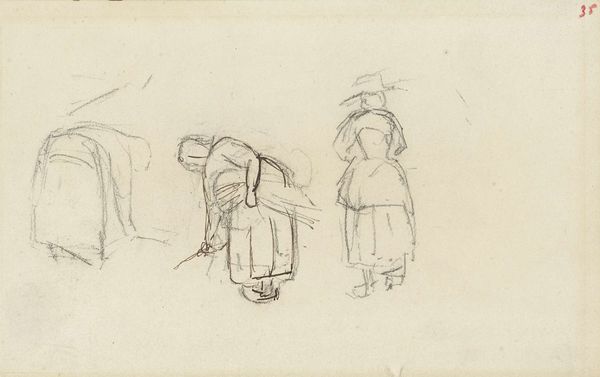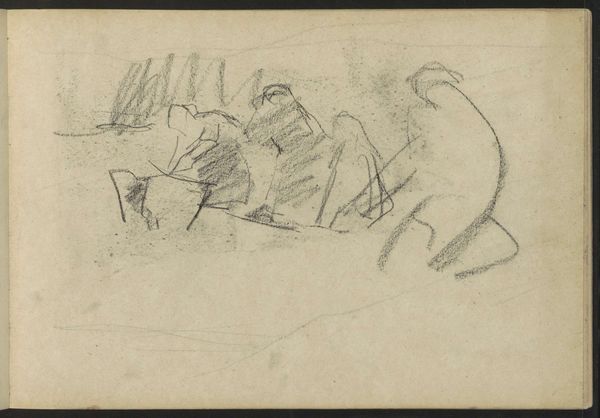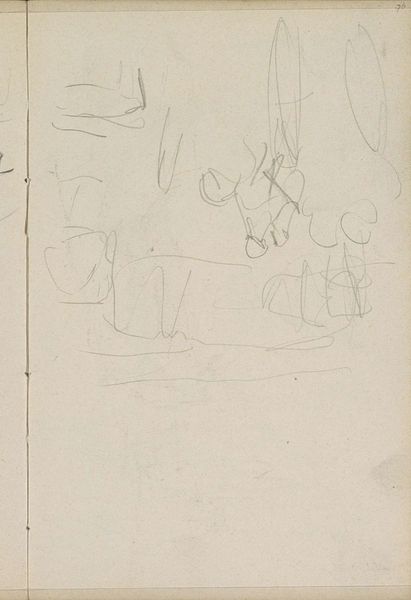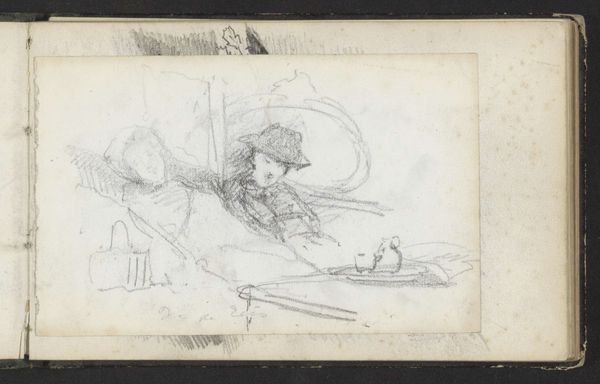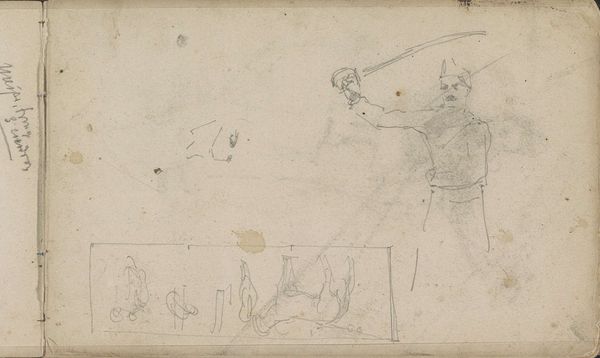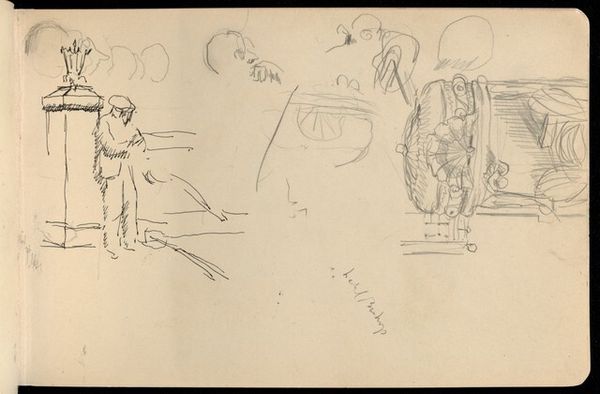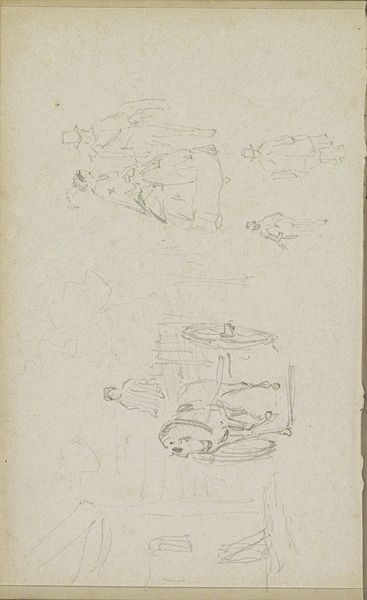
drawing, pencil
#
portrait
#
drawing
#
figuration
#
sketch
#
pencil
#
genre-painting
#
realism
Copyright: Rijks Museum: Open Domain
Curator: Looking at "Woman at a Washtub," a pencil drawing by Jozef Israëls, dated roughly between 1834 and 1911, currently held in the Rijksmuseum. The realism suggests a particular social awareness in his work. Editor: It feels more like a fleeting glimpse than a polished study. There's a vulnerability in its raw state, like capturing a stolen moment of everyday life, particularly with the rough materiality of pencil on paper. Curator: Exactly. Israëls rose to prominence capturing the lives of the poor, particularly fisherfolk. Drawings like this served as studies, revealing his social agenda in depicting everyday labor. They showcased a stark reality that academic painting often glossed over. Editor: The visible construction is compelling, too. You see the artist working through the composition. Look at the economy of the lines shaping the washtub and the woman's posture. This wasn't about illusionism, but a direct, unvarnished depiction of labor and form. It seems focused on process. Curator: Certainly. However, the political impact lies in showcasing working-class realities in a fine art context. Israëls brought these realities into museum spaces. That inclusion was revolutionary at a time when art often served elite interests. Editor: And there’s something very poignant about the domestic nature of the chore being depicted. Not romanticized labour in the fields, but the kind of drudgery that so often falls on women. He isn’t showing the beautiful end results of clean laundry, he's focused on labor. Curator: Precisely. We should also acknowledge how art institutions themselves played a part in valorizing this aesthetic. Galleries promoted a taste for scenes of social realism, and museums helped elevate artists with socially conscious themes like Jozef Israëls to national heroes. Editor: Looking at how Israëls approached representing labor, the material simplicity is vital. It challenges established boundaries between craft and high art. I will be interested to read how society then consumed and displayed works about labor. Curator: Well, thank you for pointing out the relationship between technique and subject. These initial impressions have given me new ways to reflect on it! Editor: Yes, together we've teased out interesting angles between craft, depiction and labor for future viewers!
Comments
No comments
Be the first to comment and join the conversation on the ultimate creative platform.

